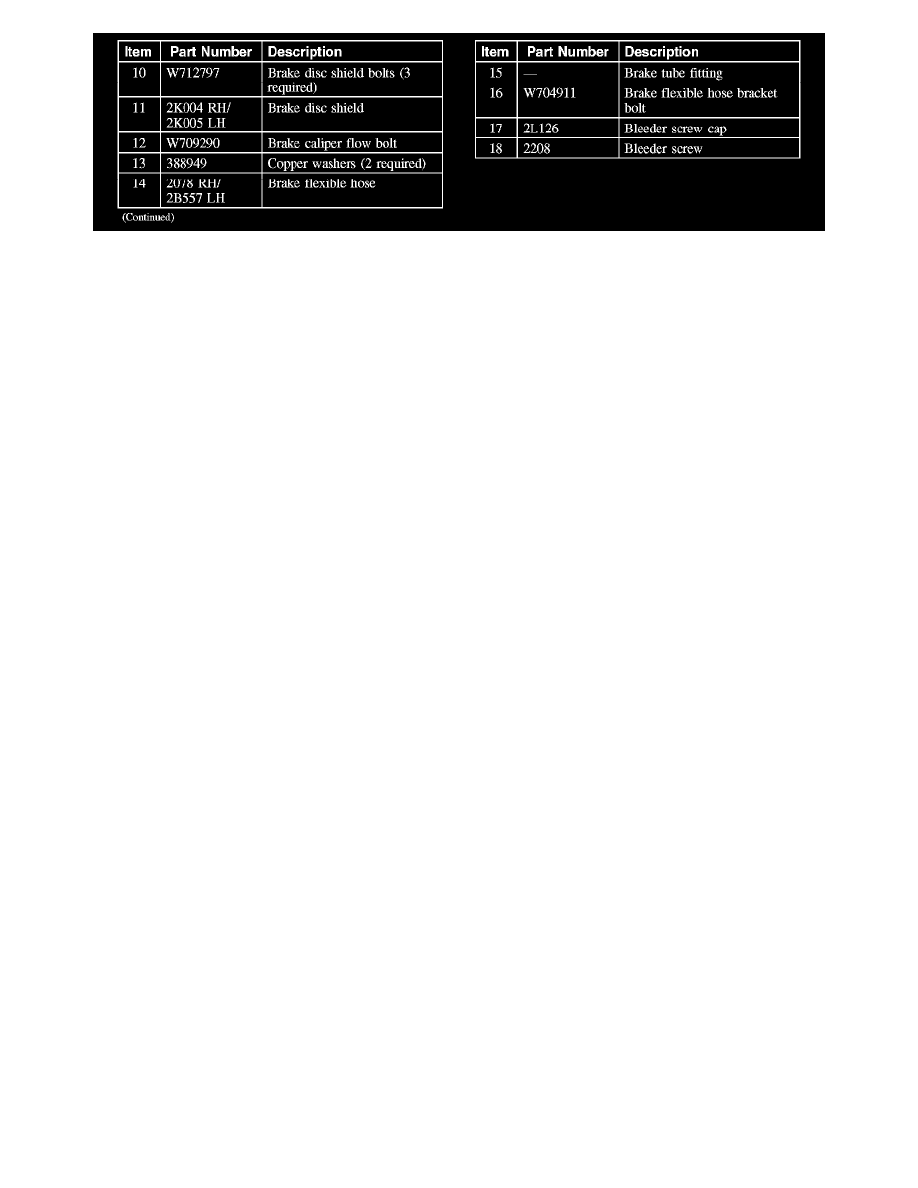Taurus X FWD V6-3.5L (2008)

Disc Brake System - Exploded View (Part 2)
Removal
WARNING: Do not use any fluid other than clean brake fluid meeting manufacturer's specification. Additionally, do not use brake fluid that
has been previously drained. Following these instructions will help prevent system contamination, brake component damage and the risk of
serious personal injury.
WARNING: Carefully read cautionary information on product label. For EMERGENCY MEDICAL INFORMATION seek medical advice.
In the USA or Canada on Ford/Motorcraft products call: 1-800-959-3673. For additional information, consult the product Material Safety
Data Sheet (MSDS) if available. Failure to follow these instructions may result in serious personal injury.
CAUTION: Brake fluid is harmful to painted and plastic surfaces. If brake fluid is spilled onto a painted or plastic surface, immediately wash
it with water.
CAUTION: Do not allow the brake fluid to come in contact with the adhesive backing on the brake pads. This may prevent the brake pads
adhesive surface from bonding with the brake caliper. If brake fluid is spilled onto the brake pads new pads must be installed.
CAUTION: Use only specified brake parts cleaner. Use of other cleaners may leave a residue on the brake caliper preventing the brake pads
adhesive surface from bonding with the brake caliper.
1. Check the brake fluid level in the brake master cylinder reservoir.
^
If required, remove the fluid until the brake master cylinder reservoir is half full.
2. Remove the wheel and tire.
3. Using a C-clamp, compress the pistons into the caliper housing.
^
Position one end of the C-clamp on the outer pad between the caliper fingers and the other end on the caliper housing. During this process, the
outer brake pad will separate from the caliper housing.
4. Remove the 2 brake caliper guide pin bolts.
5. CAUTION: When the brake pads are separated from the brake caliper, new brake pads must be installed, or brake noise and shudder
may occur. The brake pads are a one-time use only.
NOTE: The brake pads must be separated from the brake caliper before the brake caliper can be removed from the brake caliper anchor plate.
Separate the inner brake pad from the caliper.
6. CAUTION: Do not allow the brake caliper to hang from the brake hose or damage to the hose can occur.
Position the caliper aside.
^
Support the caliper using mechanic's wire.
7. CAUTION: Install new brake pads if they are worn past the specified thickness above the metal backing plates. Install new brake pads in
complete axle sets or brake pull may occur.
CAUTION: When the brake pads are removed, new brake pads must be installed, or brake noise and shudder may occur. Brake pads are
a one-time use only.
Remove the 2 brake pads and spring clips from the brake caliper anchor plate.
^
Discard the retraction clips.
8. Inspect the brake caliper for leaks or damage. Install a new brake caliper if required.
9. Inspect the brake caliper anchor plate. Install a new brake caliper anchor plate if required.
^
Inspect the guide pins and boots for binding or damage, install new as necessary.
